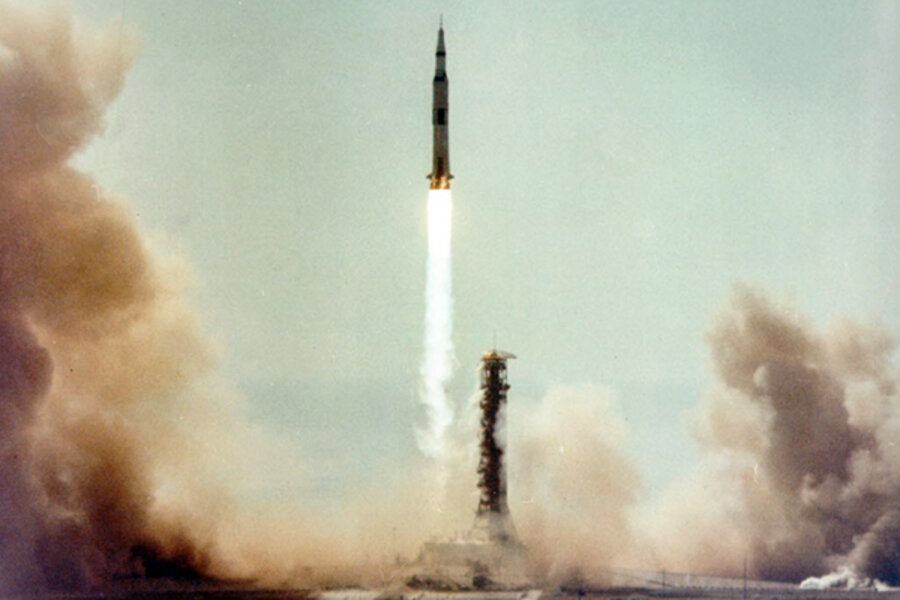Amazon CEO Bezos will hoist mammoth, antique rocket engines from seafloor
Loading...
| LOS ANGELES
Long before Amazon.com founder Jeff Bezos became an Internet mogul, he was enthralled by the mysteries of space.
As a 5-year-old, Bezos, along with half a billion people around the world, watched in awe as American astronaut Neil Armstrong took the first step on the moon in 1969.
More than 40 years later, the billionaire will attempt to haul from the dark depths of the Atlantic at least one of the mammoth rocket engines that helped boost the Apollo 11 astronauts into history.
Using high-tech sonar, an expedition spearheaded by Bezos has discovered what he claimed were discarded engines from the mission lurking 14,000 feet (4,300 meters) deep.
In an online announcement Wednesday, Bezos said he is drawing up plans to recover the sunken engines, part of the mighty Saturn V rocket that launched Armstrong, Buzz Aldrin and Michael Collins on their moon mission.
It was not immediately clear when Bezos' team spotted the Apollo engines. Bezos offered few details about the discovery and did not say how he knew the engines were from Apollo 11. The cost of the recovery was not disclosed, but Bezos said it will be done with private funds.
Amazon spokesman Drew Herdener said Bezos was not available for comment.
The five engines dropped into the sea as planned minutes after liftoff in 1969. Four days later, Armstrong and Aldrin walked on the moon.
"We don't know yet what condition these engines might be in," he wrote. "They hit the ocean at high velocity and have been in salt water for more than 40 years. On the other hand, they're made of tough stuff, so we'll see."
Bezos acknowledged the engines were the property of NASA, but said he hoped they will be displayed in museums.
NASA expressed excitement about the find. The space agency said it has not been formally contacted byBezos and waited for more information.
"There has always been great interest in artifacts from the early days of space exploration and his announcement only adds to the enthusiasm of those interested in NASA's history," NASA spokesman Bob Jacobs said in a statement.
No timetable has been set for the recovery. When it happens, it'll undoubtedly take longer to hoist the 19-foot (6-meter) engines off the sea floor than the 2 1/2 minutes it took for them to power off the launch pad.
The sea floor is littered with spent rockets and flight parts from missions dating back to the dawn of the Space Age and it's unknown what survived decades later after crashing into the ocean.
In 2009, a private company salvaged Gus Grissom's Mercury capsule that accidentally sank in the Atlantic after splashdown in 1961. It was restored and displayed at the Kansas Cosmosphere and Space Center.
Bezos' planned Apollo recovery is the latest deep-sea adventure by the wealthy. "Avatar" director James Cameron over the weekend rode a mini-sub to Earth's deepest spot in the western Pacific Ocean, seven miles below the surface, which he described as an alien world. Sir Richard Branson plans a similar dive to the deepest part of the Atlantic, the Puerto Rican trench, later this year.







